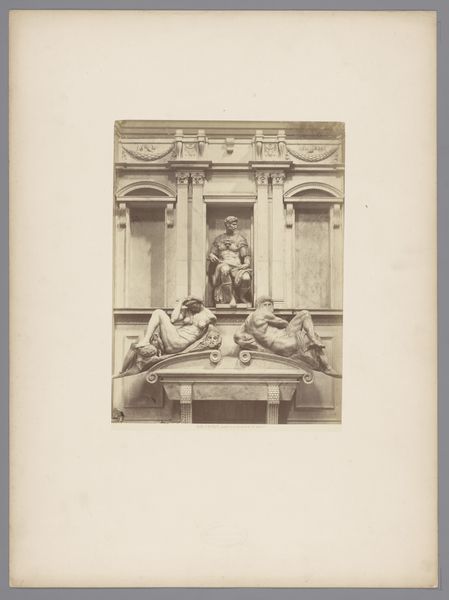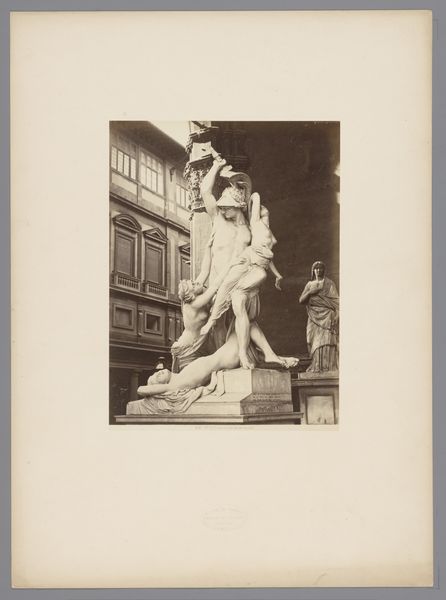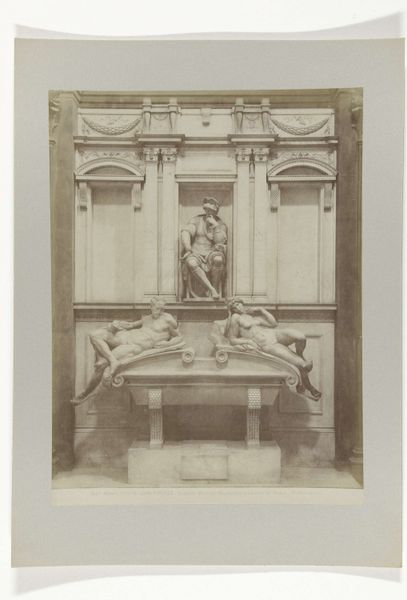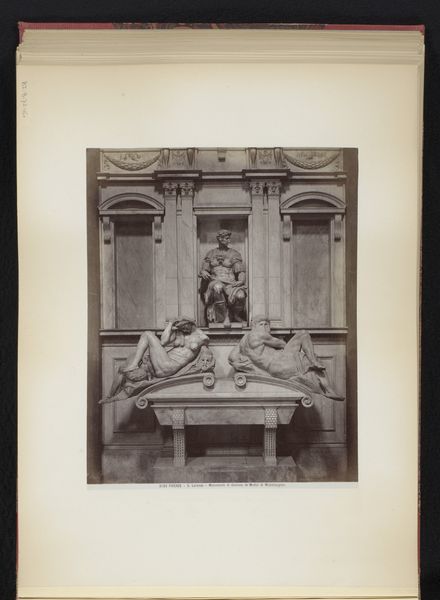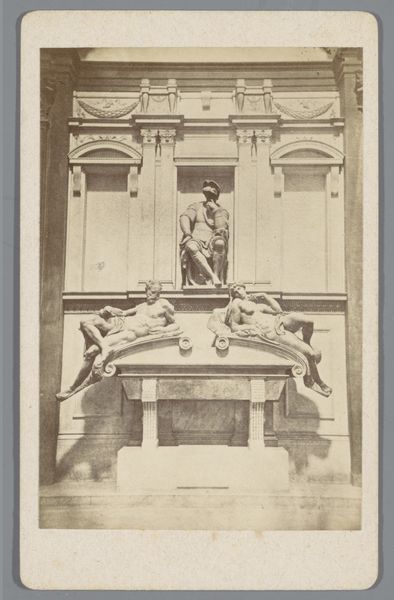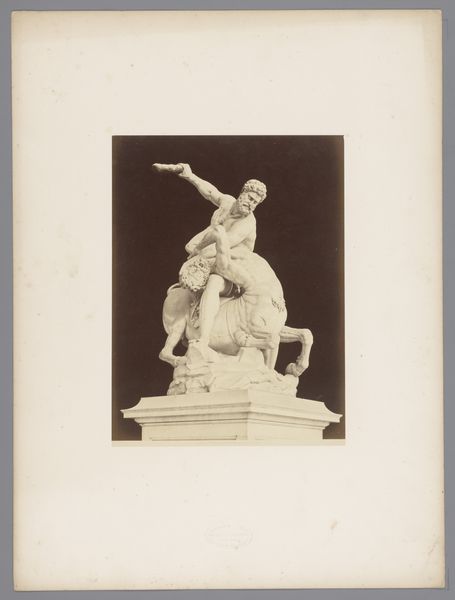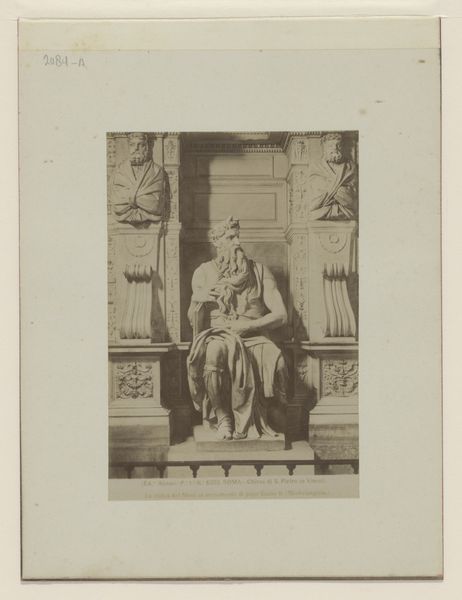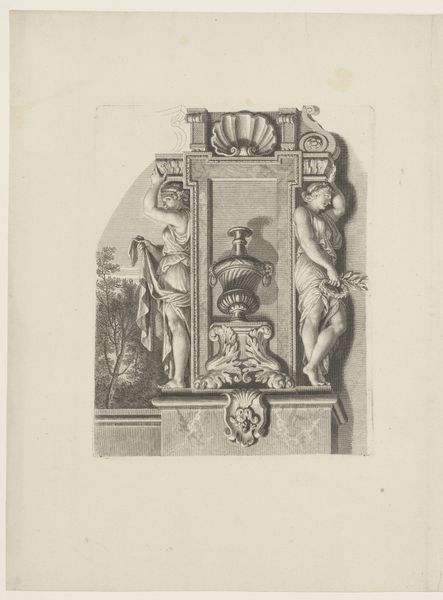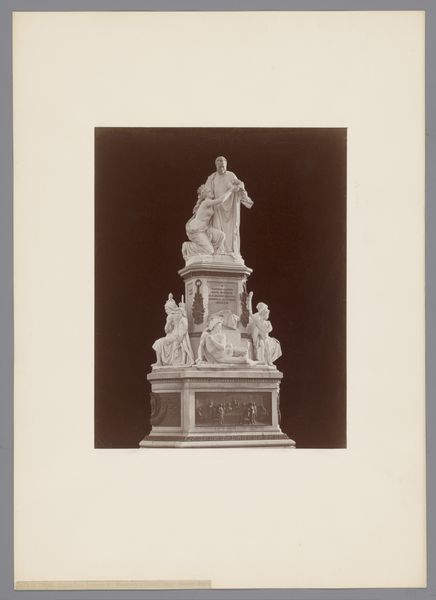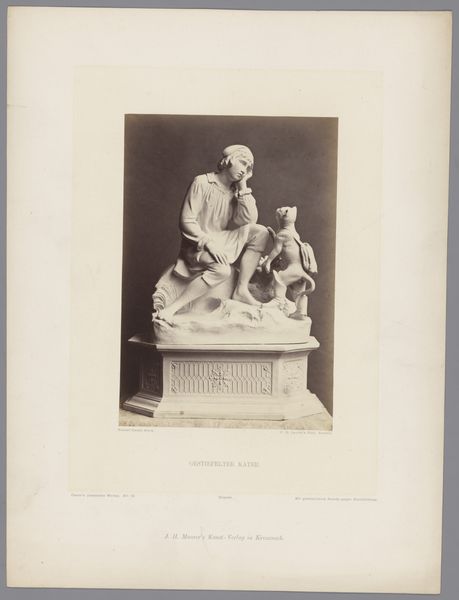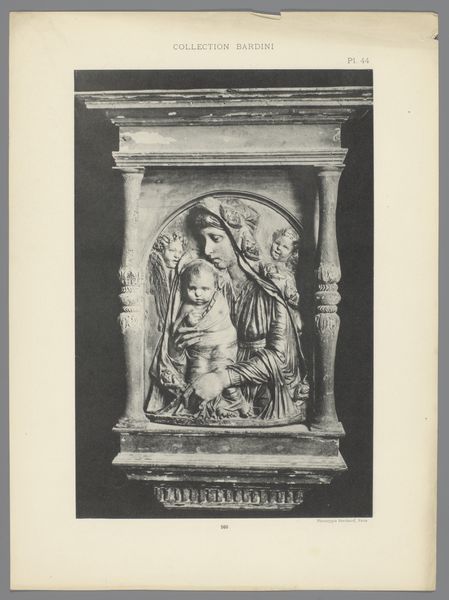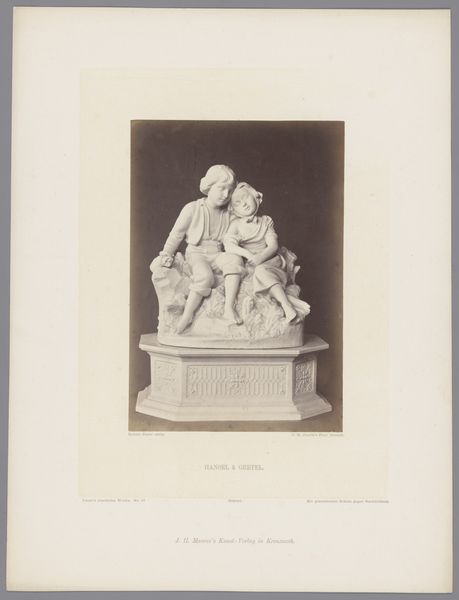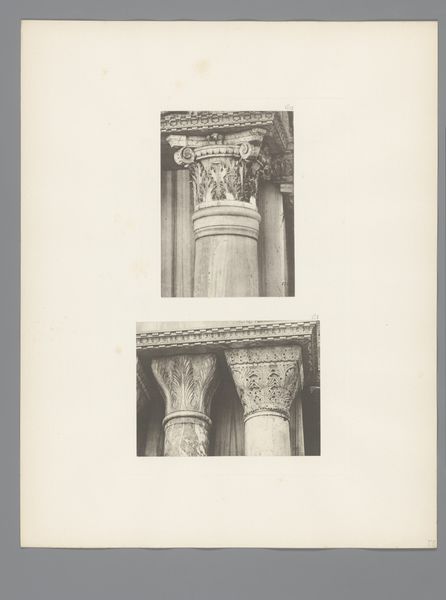
Grafmonument voor Lorenzo de' Medici in de Cappelle Medicee te Florence, Italië 1864 - 1881
0:00
0:00
print, photography, sculpture, gelatin-silver-print, marble
#
portrait
# print
#
photography
#
geometric
#
sculpture
#
gelatin-silver-print
#
history-painting
#
marble
#
italian-renaissance
#
realism
Dimensions: height 470 mm, width 350 mm
Copyright: Rijks Museum: Open Domain
Curator: This gelatin silver print from somewhere between 1864 and 1881 captures the tomb of Lorenzo de Medici, found in the Medici Chapels in Florence, Italy. Giacomo Brogi was the photographer, recording Renaissance art in this unique medium. Editor: My first impression is how eerily still it is, like a theatre set just before the actors come out. Or perhaps, long after. Those marble figures look almost spectral in this light. Curator: Well, that stillness speaks to the photographic process of the time. This was a time when lengthy exposures transformed the hustle of daily life into the illusion of permanence, freezing moments of art that themselves represented powerful families and rulers. Editor: It's funny, the irony isn't it? A photo of a static monument to represent lasting legacy! This is no snapshot but almost another form of sculpture isn’t it, albeit rendered in shades of grey, full of light and shadow playing on marble’s smooth coldness? The artist's intention shines through this artistic choice. I love how this print captures that heavy marble. Curator: Indeed. The photographic process enabled broader circulation of artworks and cultural values. It democratized, in a way, access to art previously only accessible to those who could travel. People could take photos like these home. Think about how powerful that is for the understanding of art history! Editor: What do you think it communicates about our understanding of the Renaissance, presenting that age through a lens made decades later? Is it an attempt to capture, recreate, and own what once was and gone? I can’t help but see a little ghostly essence, even as I'm grounded in our reality. Curator: A thought-provoking question. The Renaissance becomes romanticized, an unattainable ideal viewed through a sepia-toned lens, quite literally in many cases. Yet these images allowed a new audience, through photography, to contemplate Renaissance masterpieces from new and changing viewpoints. Editor: Seeing that is a reminder about how memory, art, and history twine. It feels deeply profound how photography allows for new angles of time meeting… I love it! Curator: I agree completely; each image encapsulates not only Brogi’s talent, the art itself, but how we continually negotiate with the art of the past.
Comments
No comments
Be the first to comment and join the conversation on the ultimate creative platform.
